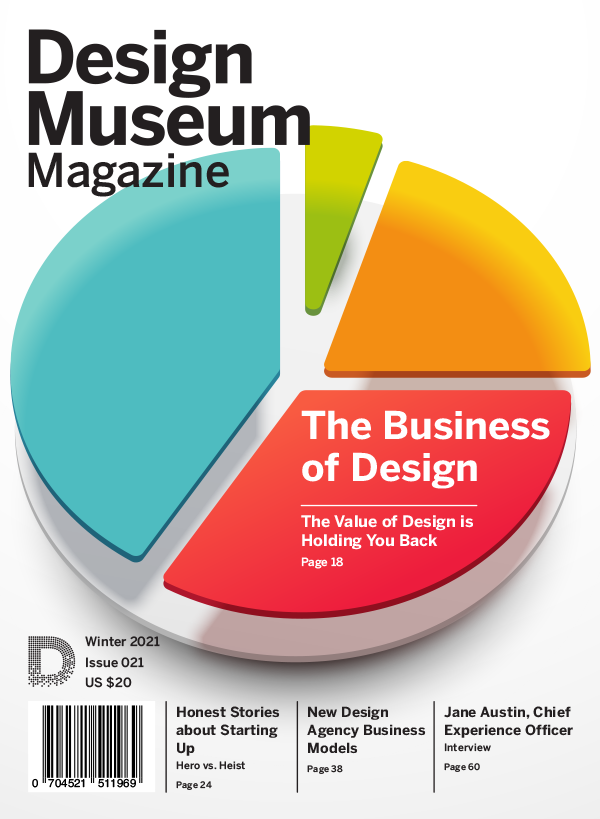From Equity-for-Service to Collective Partnership
Box Clever’s new approach to accelerating startups through design and mentorship.

By Bret Recor, Founder + Creative Director, Box Clever
The business model of design firms is broken and outdated. It doesn’t serve clients in the long-term and leaves startups and early-stage companies unsupported at their most vulnerable moments. But we have a vision for how this must change.
Design is more than ‘a step’ in the process. Too often, design is seen as a service to outsource, a deliverable or a box to check. When thought of as so siloed, collaborative momentum hits a brick wall, and the product, and ultimately the business, suffers. On the contrary, great products and user experiences require uninterrupted attention during their design, development, and refinement – attention that should continue long after going to market. Sometimes the greatest design challenges come after the relationships between businesses and design teams have wrapped up: troubleshooting the production process, or a rollout and promotion that cuts through the noise by celebrating the key elements of the offering. Today’s model sidelines experienced design teams, often in the name of cutting costs in the short-term – and, in the case of fragile young businesses, leaves them to sink or swim.
The designer-as-vendor model is set up for failure, or at least for limited success. It’s engineered for a hand-off, an “I’ll take it from here” – and even the closest, most aligned collaborators can still drift apart after the initial phases of design are complete. Founders have paid for the design and that has been delivered, the logic often goes, and so what is the value of keeping a third-party design agency involved? CFOs would likely advise to move on or, if changes are needed later, to find a cheaper alternative.
It’s a model that denies the ongoing contribution that design could make throughout the life of a business, and the strength of designers to not only create tangible products through design services but also drive more value through creative problem-solving more generally.
What would happen if instead of viewing design as a discreet service, we saw its greater contribution to business growth and development? What might a partnership devised to suit that kind of contribution look like? And what could the end products of such a partnership look like?
Attempt to Improve: Service for Equity
Though we all seem to acknowledge the value of good design in business, we maintain a fairly distinct separation between the two: business is an imperative, design is a service. We use design for business, never the other way around. This is seen in how we create and support good business versus good design. Good business happens through building networks of support, through constant re-evaluation, and in understanding it as unending; good design happens (it is believed) in a studio, isolated and timebound.
Business incubators, for example, provide funding, mentorship, resources, and access to a broader network of people to help startups get from idea to product and to shepherd them through the rocky early years of existence. They typically take equity in exchange for investment and for this community of support. While ninety percent of startups fail, the incubator model is devised to make a lot of bets – while the one in ten successful businesses will make the incubator millions (or billions). You might call this model a great success, if evidenced by the sheer number of incubators out there, or by how many design agencies (and others) are opting to discount fees and do as they do in Silicon Valley: take equity.
Firstly, design agencies understand their role in creating some of these successes and want a slice of the rewards when those products make massive returns. But equally, it can also be a means of maintaining a seat at the table: with investment, they can extend their presence at least in some limited form.
It is a model that we at Box Clever have been exploring since our founding nine years ago, and for the last five, it has become the most common way for us to engage clients.
More and more branding and design agencies like ours are taking a page from business incubators’ book and moving away from cash-only projects to only work with companies they believe will deliver a return on investment through equity.
The draw is obvious: the combined valuation of leading incubator Y Combinator companies exceeds $400 billion (it includes the likes of Airbnb, Dropbox, and Reddit). And that is nice for the incubators and investors. But for the individual entrepreneurs—despite all the advice, mentorship, and capital an incubator provides—by and large, it is not enough. It bears repeating: the vast majority of startups will fail. Even those with the help of incubators who’ve launched dozens of unicorns.
Bright ideas are often painfully dimmed by a choppy road to launch. We have worked with clients who, when it has come down to production, have opted to cut corners to disastrous results for their business. Months and millions are often lost, needing to revisit design work that was quickly compromised by inexperienced in-house teams, who couldn’t see the mistakes being made on the factory floor. An attempt to save X amount sometimes resulted in the need to spend ten times that amount to fix the error. Often, we knew we could have helped, and often we offered to. And yet, we weren’t given permission. In some cases—even as equity holders—our help and advice were not accepted.
When great partnership is embraced, design can contribute to better outcomes—for the product, planet, and so much else. A critical facet of industrial and product design is creating uncompromised physical products and experiences that revolutionize the everyday. With luggage makers Away, and cookware brand Caraway, two companies with whom we have worked, quality of finish and production was key. For both, Box Clever spent time at their factories in China, working closely with the manufacturers throughout the production process to ensure the fidelity of the design work everyone had poured their hearts into – and on which those businesses rely as a point of difference.
In addition, over the years Box Clever has collaborated with a vast array of companies to bring their imaginative designs from the page to real life in an environmentally conscious way. Design models for positive change can include strategies such as subscription and upgrading plans where companies take back and responsibly handle old products (for Vave Health, we incorporated this into the design of a portable, wireless ultrasound machine), more traditional strategies to reuse or limit plastics (as we helped create for Eddi soap dispenser), and more. It is imperative designers explore moving beyond greenwashing and catch up to the evolving discernment of consumers around making a positive environmental impact.
What would happen if more of these deep-rooted partnerships were made standard practice and codified in a business model; not just offering connections as an incubator does but being in the room; not just taking equity so we have an upside, but being able to contribute our experience in a real and ongoing way. How can we level up from just vendor-with-equity?


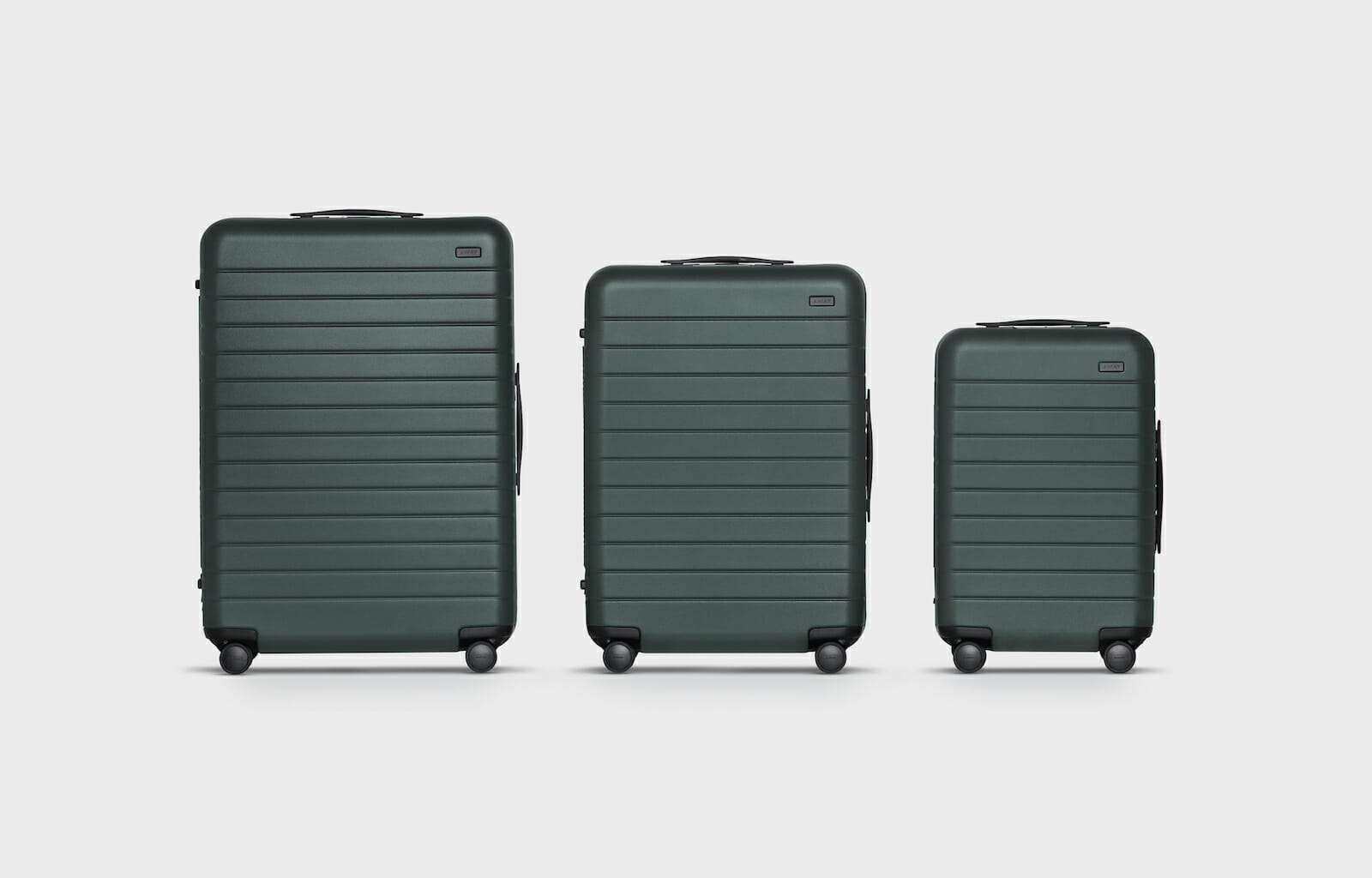
Industrial design client work, top to bottom: Eddi Soap Dispenser, Fade Task Light, and Away Luggage.
The Future is True Partnership
While innovative, the vendor-with-equity model is still not enough. Despite all our effort, all our investments, and all our equity in the companies we support, we are still rarely able to contribute in all the ways we can. Our expertise and our network are underutilized. There’s a baked-in financial incentive for an entrepreneur to minimize our involvement.
What experienced design agencies bring to the table is far more than just design, of course. We know processes, and we know people: how to get things done, how to overcome hurdles along the way, and we know whom to ask for help when something is beyond our expertise. It’s because we’ve done it again and again with the dozens of clients with whom we’ve worked over the last 20 years. We have long been investors – creatively and financially – in our clients. The new partnership model we are developing is a step function improvement on the previous models and promises to deliver equally more value and a greater chance of success.
Our aspiration is that this new model will allow the full startup ecosystem – the entrepreneurs, the investors, the agencies, the consumers – to extract more value. It does this by establishing a more efficient and effective product development process—from investment through to end-of-life. And by avoiding the common missteps of a fragmented process, it conserves resources and reduces risk all along the way. What we seek is to become true partners — consistent, long-term, deeply interwoven partners.
‘Partners’ though, is a word that is often misused. It is a word that has come to mean an entire spectrum of professional relationships, a stand-in for so much that it’s become hard to define. The future, we believe, requires deep strategic and creative teamwork that goes far beyond an approach that limits us to service providers and investors, or vendors with equity. It goes so far it should obliterate the idea of ‘client’ altogether. Partnership for us means we can not only support a company through design and launch but for long after.
We believe that deep-seated incorporation of design and design-thinking into the creation of a new business, and not just its tactical use at inflection points, significantly improves a startup’s forecast for success. And we’re not the only ones: McKinsey’s 2018 report on design determined the best design performers, according to their index, increased their revenues and shareholder returns at a rate nearly double that of their counterparts.
In those cases, design goes beyond simply a focus on ‘the product’ in its most narrow sense, and touches on strategy, user experience, packaging, go-to-market narrative, and even reflects how they have built out their teams internally.
Partnership+
Critical to our new model is that we’re not doing it alone. A core pillar of our strategy is BCx, a collective pioneering a streamlined and stable approach to creative consulting services for startups. A good partner knows its strengths and its limitations. To overcome those limitations, we bring in trusted advisors, not unlike a traditional business incubator. Our collective is made up of a select range of members, each expert in their field. Among others, they include engineering and technical teams that help us problem-solve and steer clear of inefficiencies, and communications teams that can help us position and reveal design work to optimize product launches, and even other design partners when specific expertise is needed.
The collective is a creative brain trust that is as much a multi-dimensional effort to de-risk the very risky world of startups as it is an acknowledgment that Box Clever itself has its specialties and couldn’t possibly have all the answers. BCx consolidates the expertise of its network, bringing them into the process at the right moment to maximize their value – often earlier than a startup would choose or be able to seek their counsel without BCx as a partner. Box Clever is there throughout, using to our advantage existing chemistry with our network and an intimate understanding of their working style that allows us to be as tactical as possible about which of them we tap to contribute.
If it takes a village, then BCx builds that village – and where a traditional incubator lets founders visit, we invite them to move in. The model is agile, adaptive, and effective.
For founders, it helps smooth the process. It eases the overwhelming task of finding, fielding, and hiring partners, while also ensuring a good working dynamic because that dynamic has already been tested and can be managed by Box Clever.
This model also helps give a boost to a startup’s investor appeal, anchoring it to a partner with a proven track record of supporting success. Always in the name of de-risking, BCx is calibrated to the startup experience: mapped against fundraising cycles, go-to-market strategies, and the common hurdles of the critical first years of existence. Importantly, it does so with realistic forecasting of costs and flexible contracts that allow for programs to be customized to each company and their needs and circumstances.
Better Together, Better for Everyone
This approach was conceived out of frustration – in seeing many great ideas fizzle, investments of time and money evaporate into nothing, and a market of products that are not what they could be. But it has evolved to be much more than a way to fix those issues. It is designed to positively impact every stakeholder involved: better for investors and businesses, better for people and the planet, and better for designers and studios. We need to ensure, as this model is developed, that it achieves these imperatives.
Many principals of design agencies have found great wealth from both fees and equity in their clients’ company. This doesn’t usually filter down in any significant way to the teams whose work and commitment helped bring those projects to life. We need to restructure compensation so that designers within an agency feel they share a stake in business outcomes and are rewarded for it.
Most importantly, we need to continue to overhaul product development for a planet in crisis. Guiding companies to a circular system is a key part of our process. We want to make environmentally friendly products irresistible—and all products environmentally friendly. Establishing a presence as proper partners in the business allows us the opportunity to truly push not only for sustainability (what should be table stakes today) but also for methods of reuse and consideration for the afterlife of products.
This means not just theorizing about circularity, but committing to it now, even if the process is not yet currently perfect. Approaching circularity like a startup – starting the process in motion rather than waiting for the execution to be flawless – is important. For this to happen, we believe design and business need to be in sync.
A New Future for the Design Industry
We see this new model not only for Box Clever, but possibly as the future of the design industry. Instead of contributing, participating. Instead of providing a singular service, integrating across the business.
Design and business make less and less sense to consider as two separate disciplines. This new model aims to fuse them; they can and should operate as an alloy: melded inextricably and made stronger and more resilient in the process.
We see this business model as a way to truly balance design and business. By making them inseparable and integrated, we let each build on the strengths of the other and there are only winners: profit, people, and planet.
If we get this right, and if our process drives up value as we hope, then perhaps we’ll see others adopt it – and its impact can be multiplied. And we all know: we have a duty not to create more trash – but incredible, worthy and responsible products.
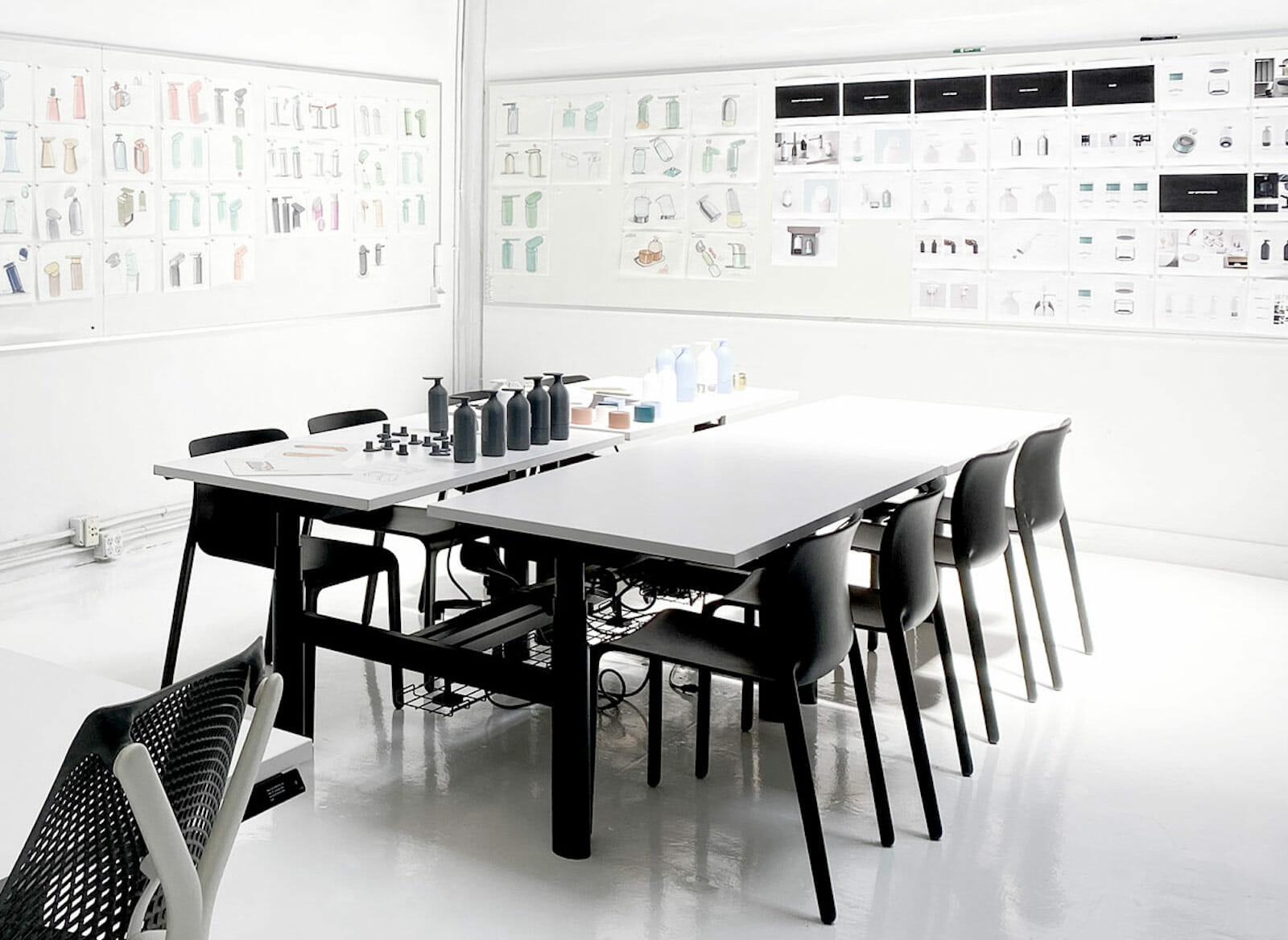
Box Clever’s studio during their work on the Eddi Soap Dispenser.
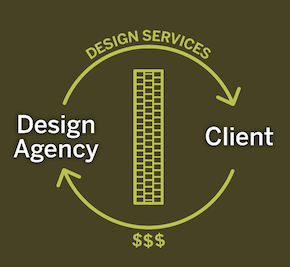
Fee-for-Service
The traditional model for consulting firms and agencies. The client pays the agency fees for a specific engagement of design services with a beginning and end.
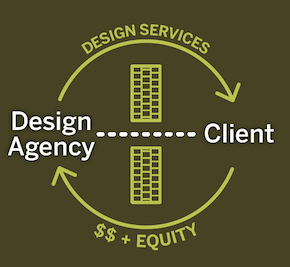
Fee+Equity-for-Service
The agency discounts fees for the design services in exchange for a modest amount of equity. This model works particularly well for cash-strapped startups. And while the services are the same, the agency has a deeper interest in the client’s long-term success.
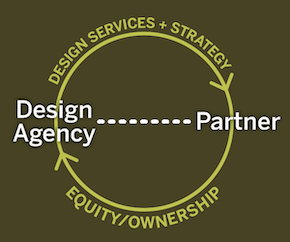
Partnership
A new model where the firm and the company (no longer a client) form a strategic partnership, including continued design services and strategic direction. The effort, duration, relationship, and impact are all elevated.
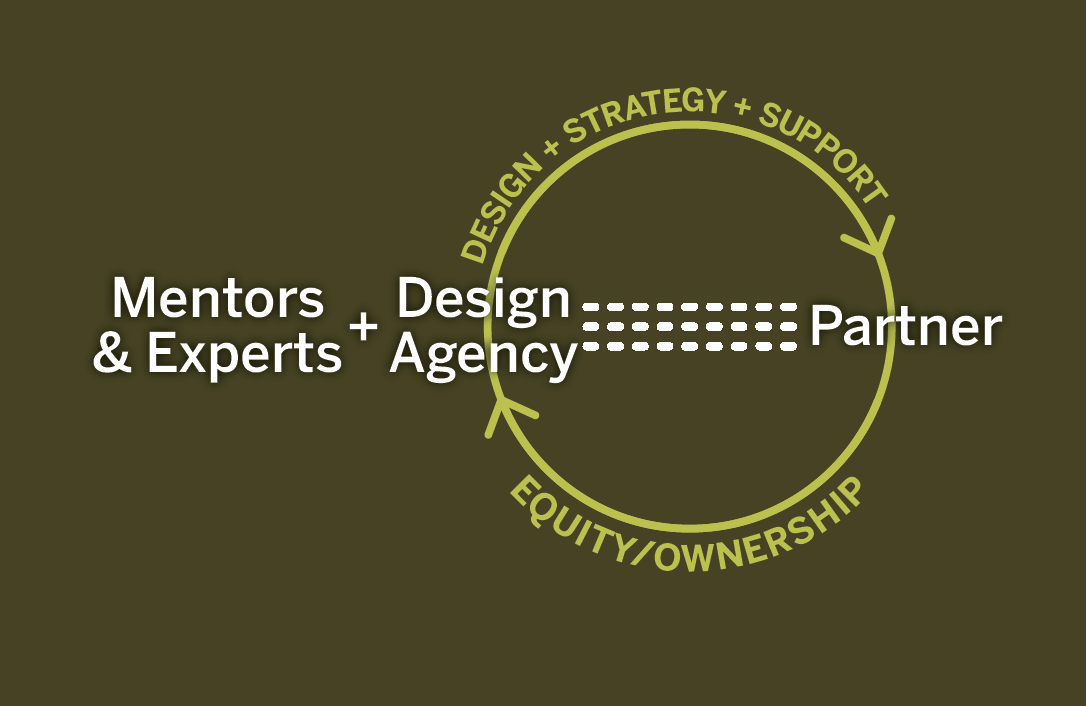
Partnership+
This enhanced partnership model adds a curated network of other partners, mentors, and experts to further accelerate the company’s business.
